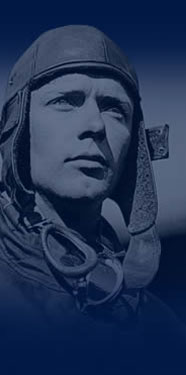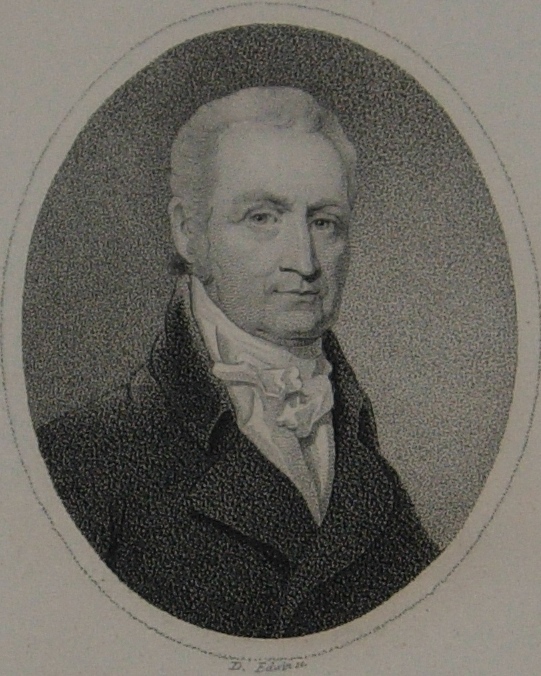Dr. John Crawford (1746-1813) was the eighth Grand Master of the Grand Lodge of A. F. & A. M. of Maryland, serving in this position from 1801-1805 and 1807-1813. He was born in Northern Ireland on May 3, 1746. The second son of a clergyman, his upbringing infused him with a refined moral character and principles. At about the age of seventeen he was sent to Trinity College in Dublin. Soon afterwards he received his degree of Doctor of Medicine from the University of Leyden in Holland, an institution held in high esteem.
Dr. Crawford was engaged as the ship’s surgeon aboard the East India Company’s ship Marquis of Rockingham, making two voyages to Bombay and Bengal between 1772 and 1774. Shortly after his marriage in 1778 he was appointed to the honorable and lucrative position of Surgeon to the naval hospital in Barbados. After a tremendous hurricane ravaged the island in 1780 he dispensed all the medicines in his possession with a liberal hand to all who needed them, without personal compensation.
In 1782 the wretched state of his health compelled him to return with his family to England. During this voyage his wife, to whom he was attached, died and left him with two infant children. He proceeded on to England, where he remained until he recovered his health. He then returned to Barbados. Around 1790 he moved to the Dutch colony of Demerara, assuming the position of Surgeon-Major. It was from the observations afforded to him while overseeing the military hospital under his charge that he began developing his theories regarding the causes and transmissions of disease.
Toward the end of 1794 ill health again obligated Dr. Crawford to return to England and later to Holland. While in Holland arranging some affairs with the Government the colony of Demerara was transferred to the British. Upon his return to England he was offered the same appointment by the British Government, which he held before under the Dutch. However, the pressing solicitation of his brother-in-law to come to the United States and the hope that accepting this invitation might prove more advantageous to his children induced him to decline the post in Demerara and he embarked for the United States in 1796, settling in Maryland.
In 1812 he was appointed Lecturer on Natural History by the Regents of the Medical College of what would become the University of Maryland. With the support of Bro. Rev. Dr. William E. Wyatt (1789-1864), Pastor of St. Paul’s Parrish and Professor of Theology at the University of Maryland, he was able to establish the ‘Baltimore General Dispensary’ and served as one of its most valued managers until his death. He was also an early member of the ‘Hibernian Benevolent Society’ and one of the founders of the ‘Bible Society of Baltimore,’ founded with the noble purpose of dispensing the Holy texts. He was also instrumental in establishing the Maryland State Penitentiary. He further distinguished himself by introducing the use of vaccines in Baltimore to combat smallpox.
Early in life he had conceived a favorable impression of the Masonic institution and is generally believed to have received his degrees sometime while in the employ of East India Company. After becoming a resident of Baltimore he sought admission and was elected a member of Amicable Lodge, No. 25 (now Amicable-St. John’s, No. 25) in December 1798. Shortly afterwards he was elected Master. In June of 1799 he was elected Deputy Grand Master and was re-elected to the position the following year. In May 1801, he was elected Grand Master and was continuously re-elected until his death in 1813, with the exception of one year when he asked to be excused (1806). He was also active in the collateral bodies. At the re-organization of the Grand Royal Arch Chapter of Maryland and the District of Columbia on January 21, 1807, he was elected Grand High Priest, and was the Chairman of the Committee that framed the first Royal Arch Constitution for this jurisdiction.
On May 5, 1813 he fell victim to a sudden and violent illness to which he succumbed four days later. On the following day the Grand Lodge and the Subordinate Lodges in Baltimore bore his remains in a solemn procession to the Presbyterian grave-yard on the corner of Fayette and Greene Streets, where the Grand Lodge subsequently erected a monument to his memory. As a further sign of regard, after his passing an engraved likeness by American artist David Edwin (1776-1841) was commissioned by Cassia Lodge, No. 45 (now part of Amicable-St. John’s, No. 25). An example of this print was subsequently presented to the museum by Cassia Lodge, No. 45 in 1911 and now hangs in the library.
Dr. Crawford was survived by one daughter, Eliza Anderson Godefroy (1789-1839). At the time she was married to Maximilian Godefroy (1765-1838), the architect who designed the old Masonic Hall on St. Paul Street and other public buildings in Baltimore, most notably the Battle Monument. Due to his substantial debts Dr. Crawford’s library, reputedly to have been a collection unparalleled in the city of Baltimore, was sold by subscription and purchased by the Faculty of Physic of the Medical College, establishing what would become the University of Maryland, Baltimore’s Health Sciences & Human Services Library. Today 569 volumes that once graced his library are treasured and maintained in the Theodore E. Woodward Historical Reading Room reflecting his educational background and medical interests. Though his theories on the causes and the spread of disease were a source of ridicule and were not accepted by his peers until after his death, he is now considered one of the pioneers in the medical profession for his advancement and use of vaccination.



 The lasting fame of Charles A. Lindbergh stems from his success at being the first person to cross from New York to Paris non-stop in a solo air...
The lasting fame of Charles A. Lindbergh stems from his success at being the first person to cross from New York to Paris non-stop in a solo air...